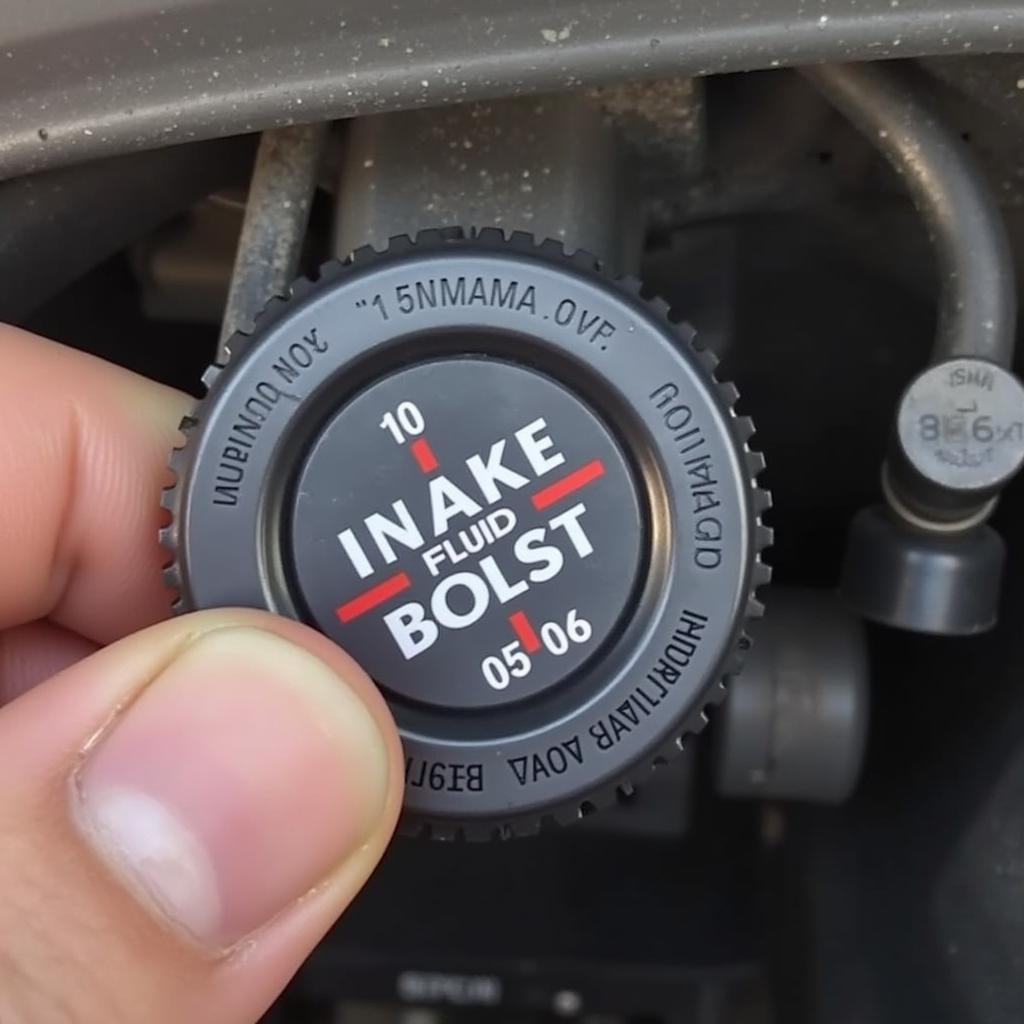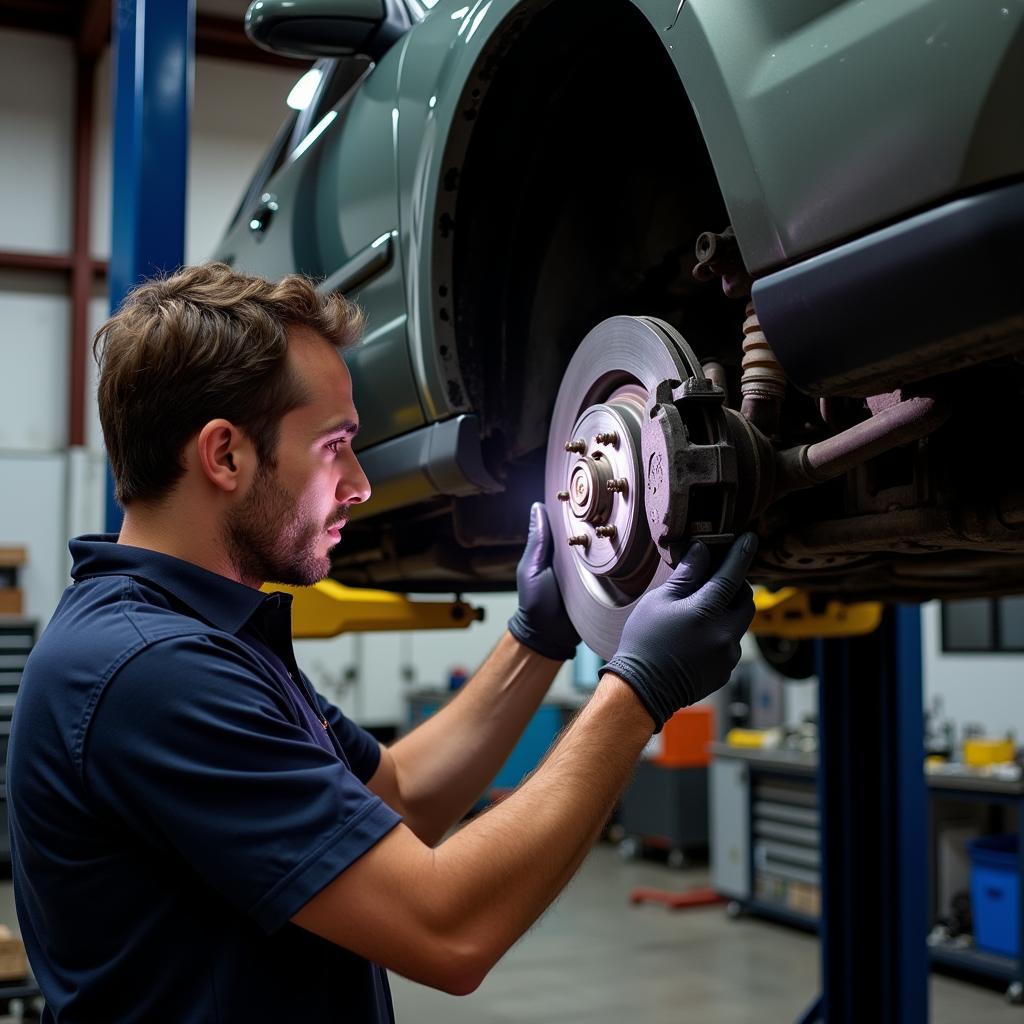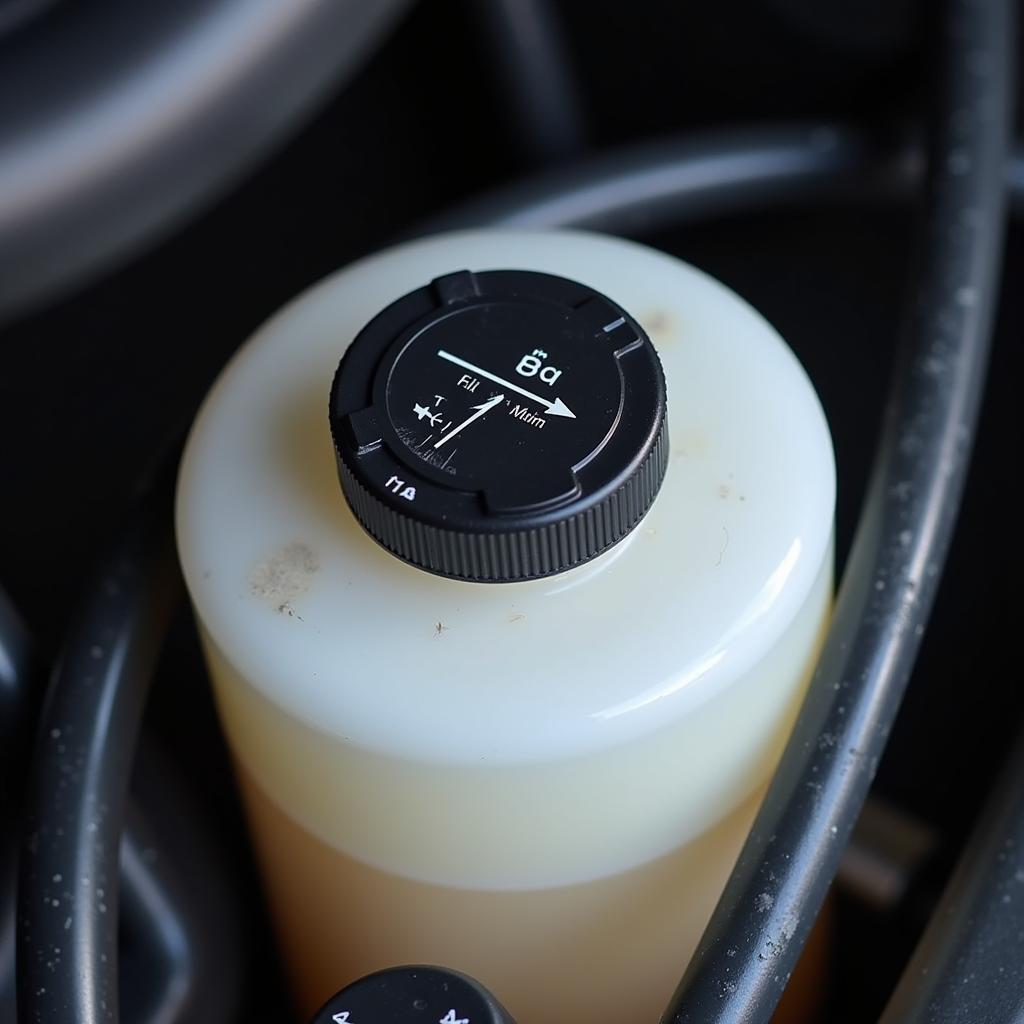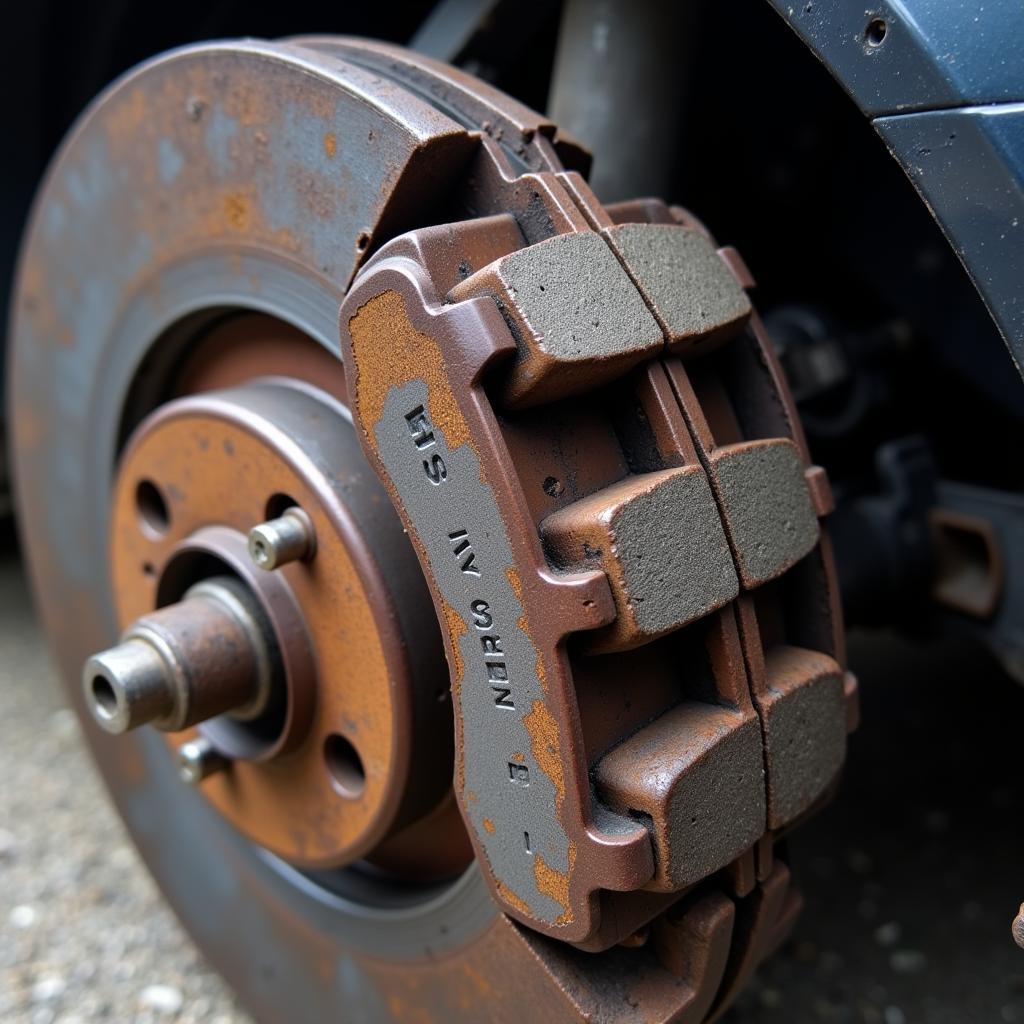The brake warning light on your 2006 Subaru Outback flashing can be a nerve-wracking experience. It’s a clear signal that something isn’t quite right with your braking system and requires your immediate attention. While it can be a sign of a serious issue, don’t panic! This comprehensive guide will walk you through the common causes and provide you with the knowledge to diagnose and potentially fix the problem yourself.
Understanding Your Subaru Outback’s Brake Warning Light
The brake warning light on your dashboard serves as a crucial safety indicator. It can illuminate for several reasons, and understanding what each one signifies can save you time, money, and potential hazards on the road. Here’s a breakdown:
- Parking Brake Engaged: The most straightforward reason for the light is an engaged parking brake. Always double-check this first.
- Low Brake Fluid: Your brake system relies on hydraulic pressure from the brake fluid to function correctly. A low fluid level, often caused by leaks or worn brake pads, can trigger the warning light.
- Faulty Brake Light Switch: This switch activates your brake lights when you press the pedal. A malfunctioning switch can confuse the car’s computer, leading to the brake light illuminating.
- ABS Issue: Your Outback’s Anti-lock Braking System (ABS) helps prevent wheel lockup during hard braking. A problem with the ABS module or sensors can also trigger the warning light.
- Worn Brake Components: Brake pads and rotors have a limited lifespan. As they wear down, their ability to generate stopping power diminishes, potentially triggering the warning light.
Diagnosing the Problem: A Step-by-Step Guide
Before you call a mechanic, try these diagnostic steps to pinpoint the issue with your Subaru Outback’s brake warning light:
- Check Your Parking Brake: Ensure the parking brake lever is completely released.
- Inspect Brake Fluid Level: Locate the brake fluid reservoir under the hood (refer to your owner’s manual). Check the fluid level. If it’s low, it indicates a leak or worn brake pads.
- Inspect Brake Pads and Rotors: Visually inspect your brake pads and rotors through the wheel spokes. Look for significant wear, deep grooves, or cracks.
 Checking the Brake Fluid Level in a 2006 Subaru Outback
Checking the Brake Fluid Level in a 2006 Subaru Outback
- Listen for Unusual Sounds: When applying the brakes, listen for any grinding, squealing, or scraping sounds. These noises can indicate worn brake pads or rotors.
- Check for Fluid Leaks: Inspect the area around the brake calipers, hoses, and the master cylinder for any signs of brake fluid leakage.
When to Seek Professional Help
While some brake issues can be addressed with basic DIY skills, certain situations require professional attention. If you encounter any of the following, it’s crucial to seek help from a qualified mechanic:
- You suspect a brake fluid leak. Brake fluid is corrosive and requires proper handling and disposal.
- Your brake pedal feels spongy or goes to the floor. This indicates a serious issue with the hydraulic system.
- Your ABS light is also illuminated. This suggests a problem with the Anti-lock Braking System.
- You’re uncomfortable performing the diagnostic steps yourself.
 Mechanic Inspecting Brakes on a 2006 Subaru Outback
Mechanic Inspecting Brakes on a 2006 Subaru Outback
Preventing Future Brake Problems
Regular maintenance is key to preventing future brake issues. Follow these tips to keep your Subaru Outback’s braking system in top shape:
- Adhere to a Brake Fluid Flush Schedule: Refer to your owner’s manual for recommended brake fluid flush intervals.
- Inspect Your Brakes Regularly: Get into the habit of visually inspecting your brake pads and rotors every few months.
- Address Warning Signs Promptly: Don’t ignore any unusual noises or changes in brake pedal feel.
Expert Insight
“Many people underestimate the importance of regular brake maintenance,” says John Smith, a certified mechanic with over 20 years of experience. “A simple brake inspection can often prevent a minor issue from escalating into a costly repair down the road.”
Taking care of your Subaru Outback’s braking system is paramount to your safety and the longevity of your vehicle. By understanding the potential causes of a brake warning light and taking the appropriate steps to address the issue, you can ensure a safe and enjoyable driving experience.


